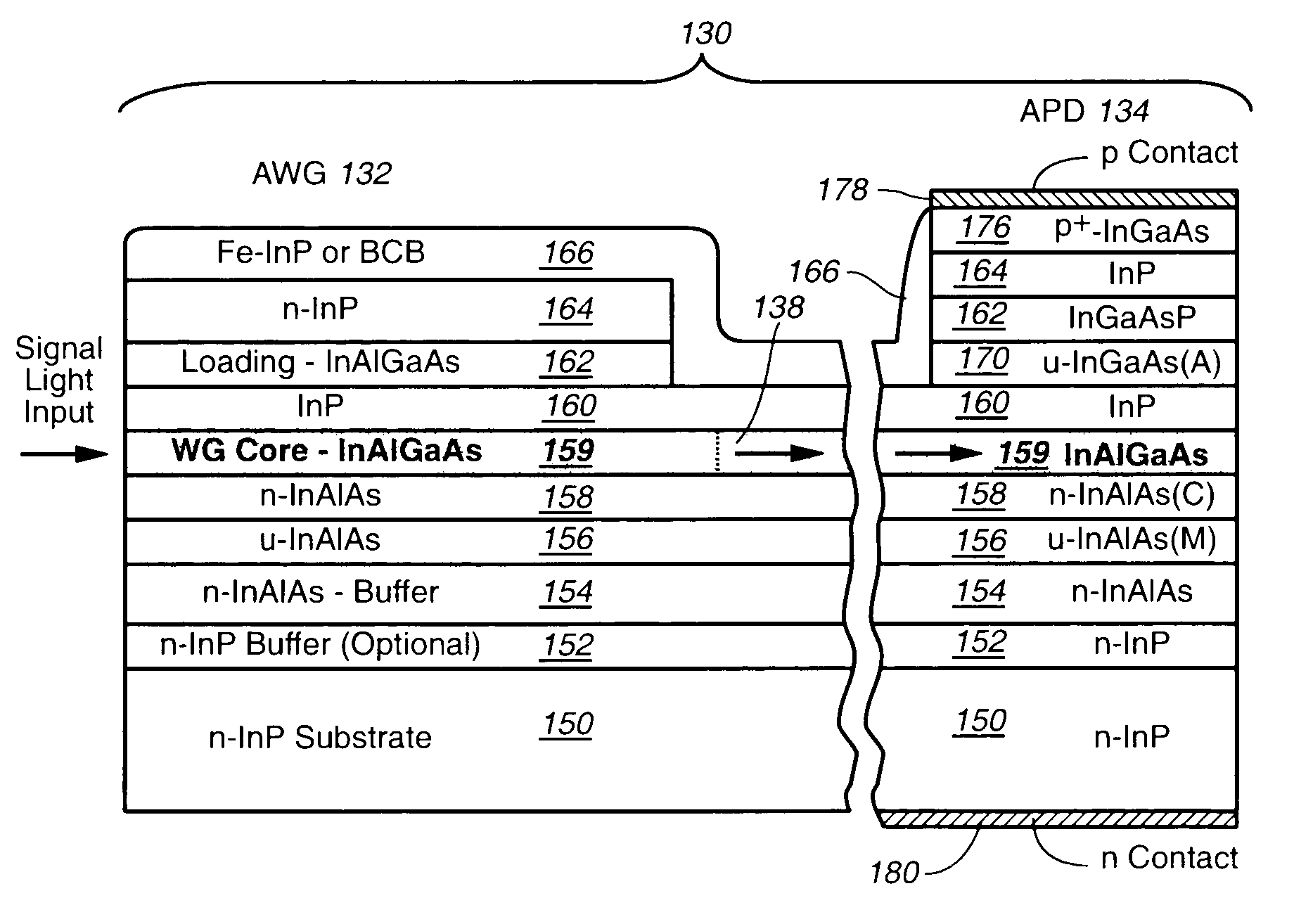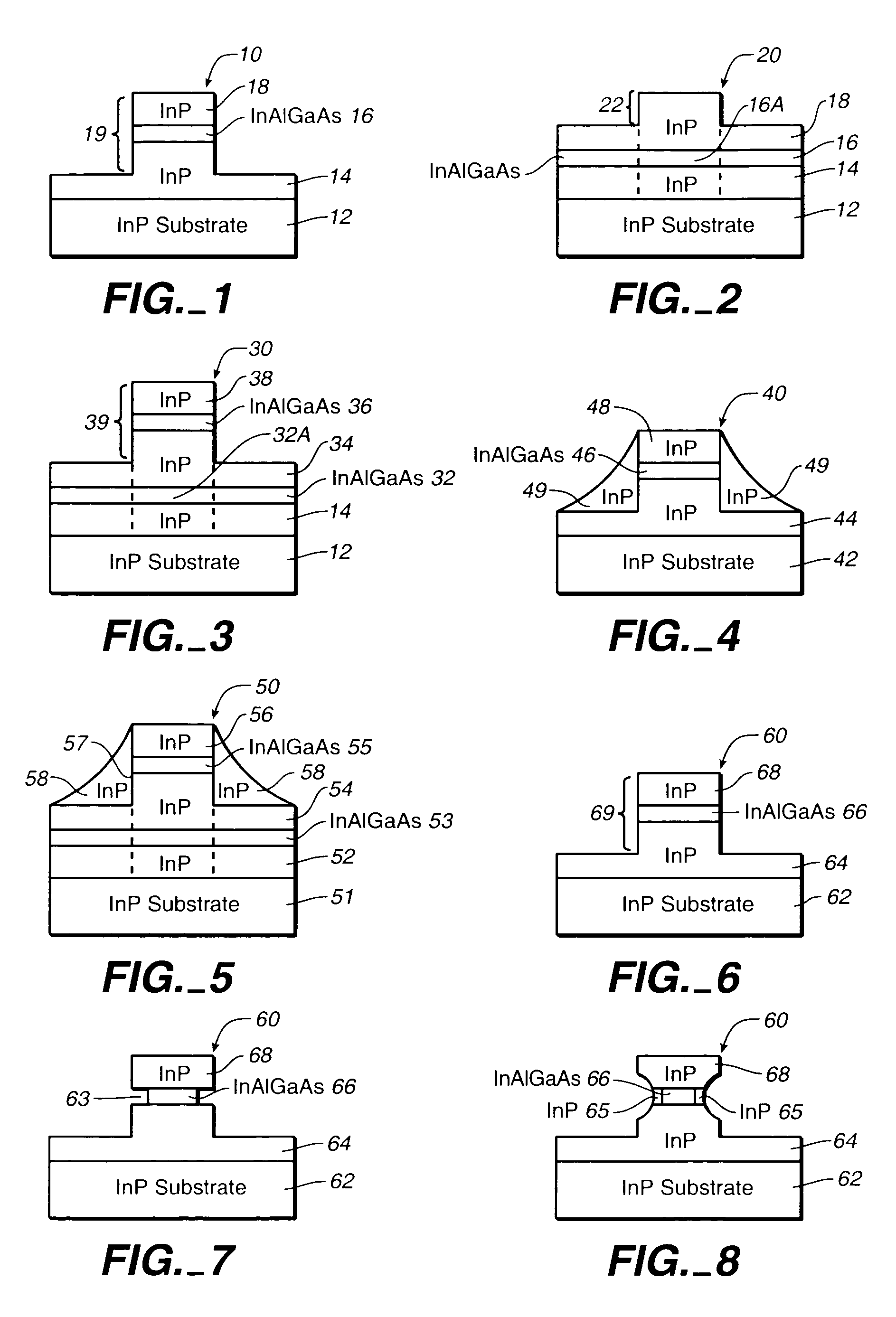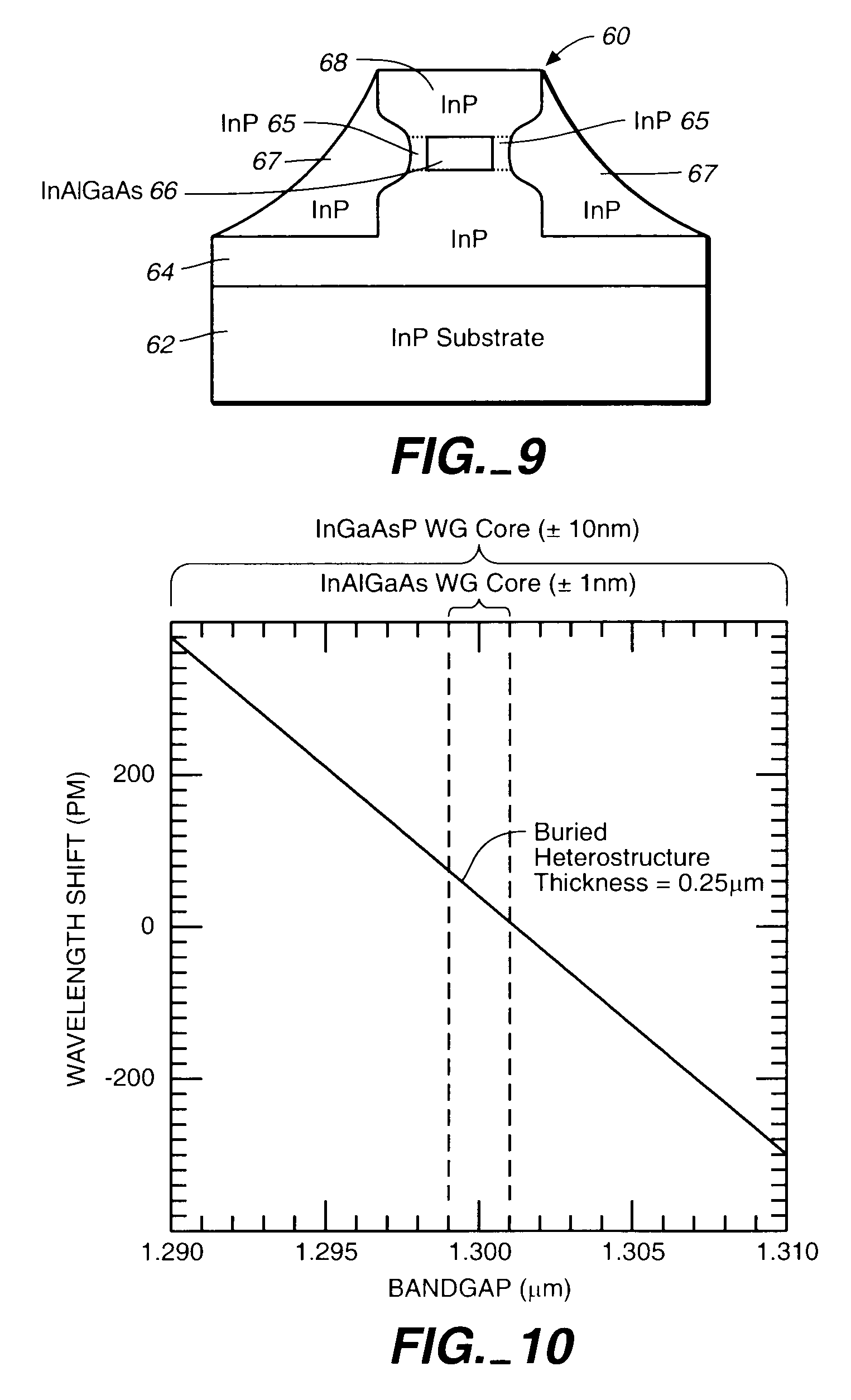InP-based photonic integrated circuits with Al-containing waveguide cores and InP-based array waveguide gratings (AWGs) and avalanche photodiodes (APDs) and other optical components containing an InAlGaAs waveguide core
a photonic integrated circuit and waveguide core technology, applied in the field of active and passive devices of semiconductors, can solve problems such as affecting performance and yield, and affecting the performance and yield of inp-based awgs
- Summary
- Abstract
- Description
- Claims
- Application Information
AI Technical Summary
Benefits of technology
Problems solved by technology
Method used
Image
Examples
Embodiment Construction
[0033]As used herein, the term, “waveguide” is also an optical waveguide core or material as well as any other optical waveguide in a semiconductor Group III–V as-grown structure or device. In the case of waveguide cores, the core can be continuous and co-planar or stepped and non-planar from one optical component to another among one or more optical components in a photonic integrated circuit (PIC).
[0034]Reference now is made to FIGS. 1–5 for examples of semiconductor structures that may utilize an InAlGaAs quaternary compound as a waveguide or core in accordance with this invention. The semiconductor structures shown in FIGS. 1–5 are, therefore, exemplary of the deployment of this invention.
[0035]Also, as used herein, an optical combiner may be comprised of a power coupler, star coupler, a MMI coupler, an Echelle grating or an arrayed waveguide grating (AWG). To be noted is that there is an absence in the art, at least to the present knowledge of the inventors herein, of the teach...
PUM
 Login to View More
Login to View More Abstract
Description
Claims
Application Information
 Login to View More
Login to View More - R&D
- Intellectual Property
- Life Sciences
- Materials
- Tech Scout
- Unparalleled Data Quality
- Higher Quality Content
- 60% Fewer Hallucinations
Browse by: Latest US Patents, China's latest patents, Technical Efficacy Thesaurus, Application Domain, Technology Topic, Popular Technical Reports.
© 2025 PatSnap. All rights reserved.Legal|Privacy policy|Modern Slavery Act Transparency Statement|Sitemap|About US| Contact US: help@patsnap.com



